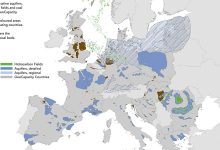IoT-based Well Surveillance solution to optimize production and reduce costs
Siemens recently announced a scalable, end-to-end IoT solution, designed to help oil and gas companies optimize production and reduce costs through connected systems, automation, and analytics at the edge. Developed in collaboration with Intel’s Industrial IoT Group, Siemens IoT Well Surveillance was showcased at the Abu Dhabi International Petroleum Exhibition & Conference (ADIPEC), from November 13 to 16, in Abu Dhabi.
According to Siemens representatives, this innovative solution offers companies across the oil and gas industry a cost-efficient solution to link distributed assets into an integrated network with minimal effort, while simultaneously providing a high level of automation.
Declining revenues demand new approaches
In a sector beleaguered by falling prices, Siemens IoT Well Surveillance will allow energy companies to acquire the cost benefits of Digitization. Oil and gas prices have dropped by 50 percent since 2014 and companies are looking to technology for the business transformation that will increase efficiency and optimize operations.
Oil field facilities and assets are typically a significant distance apart and often only partially integrated into automation systems. This makes data capture for central storage and analysis difficult and limits operational visibility.
Siemens IoT Well Surveillance lets companies connect and integrate data from previously unconnected assets in a cost-efficient manner – enabling comprehensive condition monitoring, predictive maintenance, and reduced facility downtime.
Smart data, condition monitoring, and analytics at the edge
Siemens IoT Well Surveillance addresses field operation and oilfield artificial lift control. The solution uses existing sensors and Siemens’ Simocode motor management system as key inputs for edge data analytics. The edge computing device, an Intel-powered Siemens Nanobox, performs advanced analytics and soft sensing on this data, calculating pump conditions from it, triggering alerts, and optimizing the production. Performing these calculations at the pump enables independent operation on the well. For further processing and field analytics the information is sent to a central system such as SCADA or an IoT platform. Dynagraph and alert functions with video integration are available for well site personnel via a fully interactive web portal.
The solution is tightly integrated with the Siemens MindSphere IoT platform, with a seamless connection between the production facility and applications for advanced analytics of multiple wells.
Overall benefits of Siemens IoT Well Surveillance include increased asset awareness, operational efficiency, and increased revenue from production optimization.
“Siemens IoT Well Surveillance optimizes oil production and works with the utmost energy efficiency,” says Uwe Tröger, Siemens Head of Global Oil & Gas Onshore and Senior Executive VP of the Process Industries and Drives (PD) and the Digital Factory (DF) Divisions in the Middle East. “This enables costs to be driven down in an industry undertaking enormous efforts to ensure continued profitability in the face of low oil prices. By using Digitalization and innovative technologies already successful in other industries, it’s also possible to improve both economy and reliability,” he added.
Intel’s technology collaboration
Intel collaborated with Siemens in the development of Siemens IoT Well Surveillance. Both Intel technologies and hardware are featured in the solution, including an Intel® Atom™ processor-powered Siemens Nanobox gateway and an Intel-based wireless access point. The Intel® Core™ i5 processor-powered ruggedized tablet is used for onsite visualization of up to six months of data and for data capture at the well. Intel also collaborated on the edge software.
“Siemens’ innovative IoT solution for artificial lift monitoring, analytics, and control, based on scalable Intel IoT technology, demonstrates the value of edge analytics and soft sensing for well optimization and control, while appreciably lowering the total cost of ownership,” says Christine Boles, General Manager of the Industrial & Energy Solutions Division in Intel’s Internet of Things Group. “Together, Intel and Siemens are helping transform the world of oil field automation and enabling companies to succeed in a challenging market.”
OMV pilot deployment
OMV, a Vienna-based integrated oil and gas company, has been piloting the Siemens IoT Well Surveillance solution at an OMV oil field since April 2017. An operator of several thousand beam pump stripper wells, OMV is highly encouraged by the early pilot results which have enabled production optimization, early production loss identification and deferment, maintenance optimization, and field personnel relief.
“The Siemens solution enables complete asset awareness at reasonable cost for wells with low production, such as stripper wells,” says OMV Saša Blažeković, Team Leader Production Support.
The mineral oil corporation OMV operates several hundred horsehead pumps in Austria. The solution presented by Siemens and its development partners enables the complete integration of production systems of this kind into the automation environment.
Global commercial release of Siemens IoT Well Surveillance is scheduled for early 2018.
Siemens Austria is one of the leading technology companies of the country. In total around 10,200 employees work for Siemens in Austria. Sales in the 2016 fiscal year amounted to 3.3 billion euros. The business activities focus on the areas electrification, automation and digitalization. In essence this includes systems and services for power generation, transmission and distribution as well as energy efficient products and solutions for production, transportation and building technologies and technologies for high-quality and integrated healthcare. Automation technologies, software and data analytics play a major role in these areas. With its six plants, globally active competence centres and regional expertise in every single Federal Province, Siemens Austria significantly contributes to the local value add. With around 10,500 suppliers – roughly 6,700 of these are based in Austria – the purchasing volume of the Siemens AG Österreich from outside suppliers itself amounted to more than 1 billion euros in the past fiscal year. Siemens Austria not only holds the business responsibility for the local market, but also for 18 additional countries in the region Central and Eastern Europe as well as for Israel.







